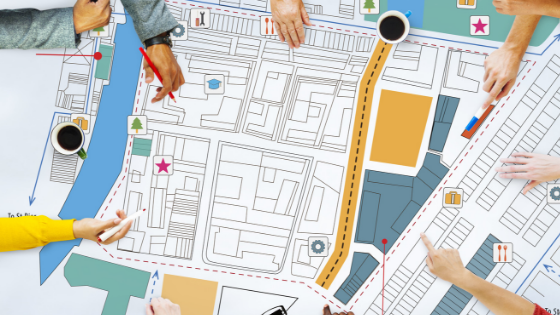Disasters don’t discriminate. They can hit any corner of the world at any time and can take several forms.
If your company doesn’t have a disaster management plan, you’re not just putting your company at risk, you’re putting your employees at risk.
Here’s why you need a disaster management plan and what you can do to develop yours.
Why You Need a Site Disaster Management Plan
A disaster management plan is a preventative plan designed to reduce the harmful effects of a disaster like a hurricane or extreme storms.
By creating a disaster management plan ahead of time, before a disaster strikes, you can prepare your organization to meet a disaster as it comes. You’ll minimize the waste of time and resources that are all too precious after a disaster.
But without a disaster management plan, your team can’t react efficiently. You won’t be prepared to communicate effectively, or get to a disaster site, or ensure that your workplace doesn’t become a hazard to the community in the interim.
How to Prepare a Disaster Management Plan
Disaster management plans are all about planning ahead. You have to think about what could go wrong in a disaster and develop protocols to address those issues.
It doesn’t matter how amazing your team is or how calm they are under pressure. If you don’t have a plan in place, they won’t be able to handle problems effectively when a real disaster strikes. They’ll be scared and confused. They’ll be more worried about getting to safety than thinking things through.
So, if you want to establish an effective disaster management plan, you have to do it long before a disaster is on the horizon.
Identify Who Does What
One of the biggest concerns is managing your people. After all, your people will work together to protect and utilize your resources in an emergency situation. As such, it’s critical that you identify who is responsible for doing what in an emergency.
For example, you should have certain team members listed who other employees can contact if they need information. If there are certain protocols that must be followed to keep your workplace safe in a disaster, such as chemical containment, you have to identify what employees will stay behind to execute those protocols before they evacuate.
Work Through Considerations Early
If you’re setting up a disaster recovery site as part of your plan, you have to work through your considerations early. For example, location. How far is your disaster recovery site from your original site? If it’s far away from your original site, employees may have trouble getting to it.
You also have to consider how long you’ll use the recovery site before your parent site is active again. If you plan to be there for a while, you have to have the supplies needed to set up camp. If your employees have to access certain technology to do their jobs, the recovery site should have it.
Put People First
Above all, you need to put people first. Your employees are the ones who get your disaster planning to work. They’re the ones who will execute procedures and keep each other safe if they need to respond in an emergency.
You have to think about your employees. For example, how many people could be injured in a disaster? How will you handle those injuries? How will you get them to safety? How will you obtain medical care? If you don’t think of these things in advance, you won’t be able to protect your employees in an emergency.
Creating a successful disaster management plan is all about remembering your priorities. If you prioritize employee safety, developing a plan should come easily.
